When you compare the realme 8 5G to last year’s realme 7 5G or to its LTE version, you might see the 8 5G as quite a downgrade on paper. However, if we’re going to look at it without comparing to its predecessors, its specification actually comes reasonably good for an official price of PHP 11,990USD 204INR 17,321EUR 195CNY 1,488. We’ve been using it for a few days now and here’s what we think.
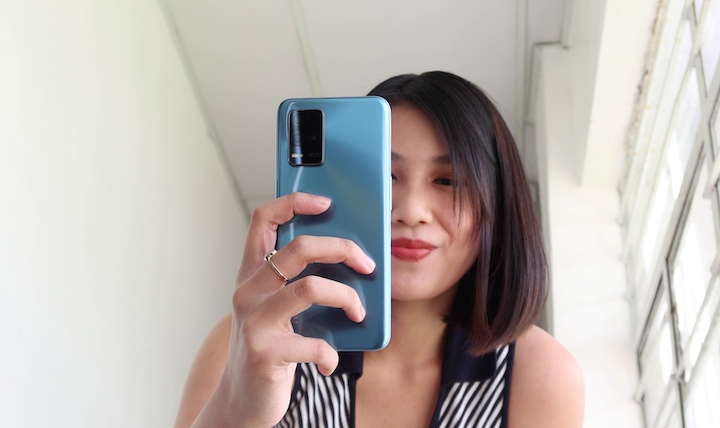
Table of Contents
Right off the bat, the realme 8 5G feels light to hold and is easy to slip into your pockets, despite its large 5000mAh battery. It features a simple yet good-looking curved glasstic back that gives off a slight light effect when moved towards different angles—it sure looks premium. I guess realme’s attempt to place their slogan “dare to leap” boldly at the back of the realme 8 and 8 Pro was an experiment, and we’re not complaining that they didn’t stick to it.
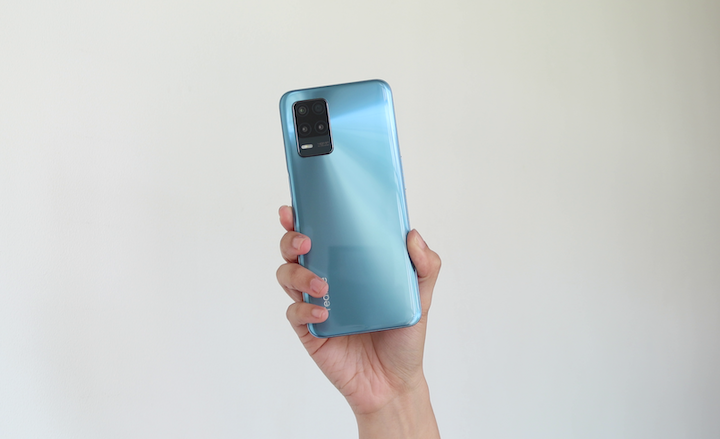
However, as we get a glossy finish here, it is highly prone to fingerprint smudges so it’s best to put a case on. On a side note, I do appreciate that it’s easier to wipe off some smudges on this shiny back compared to other glossy-designed smartphones I’ve held.
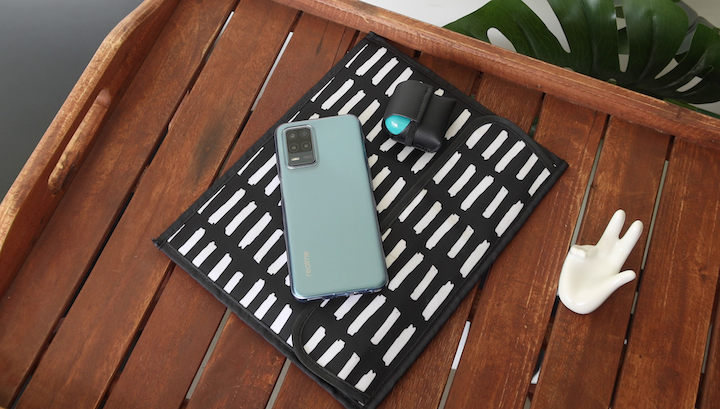
More at the back, we get a protruding camera module on the left side for its triple cameras and LED flash, then at the bottom left is a realme logo. The unit we have is in the Supersonic Blue color and its also available in Supersonic black if you prefer a more classic look.

Upfront is a 6.5-inch screen with relatively slim bezels and a tad bit thicker chin. It’s got a hole punch on the upper left for the selfie camera, while placed above it in the bezel is the earpiece. Realme didn’t mention any Gorilla Glass protection for this phone, but it does have a pre-installed screen protector on top.

Located on the left side are the volume buttons together with the triple-card tray for two nano-sized SIM cards and a microSD card for up to 1TB.
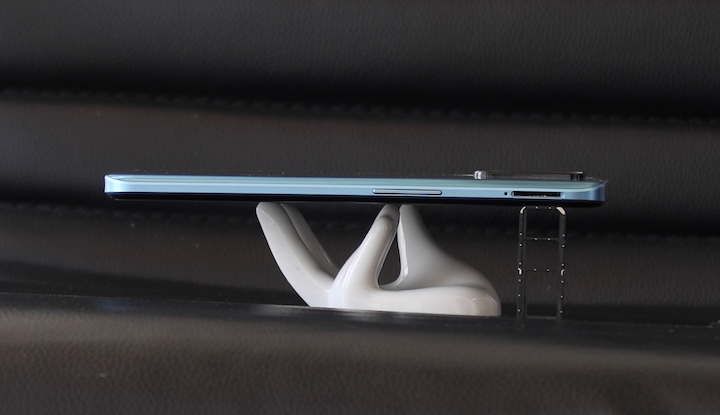
On the right is the power button, which also doubles as a fingerprint scanner. We found all the buttons nicely clicky and are easy to reach since they’re placed near the center of the frame.

There’s nothing at the top but located at the bottom are its 3.5mm headphone jack, main microphone, USB-C port, and loudspeaker.

Its 6.5-inch screen has an IPS panel with a resolution of 2400 x 1080px, a pixel density of 405ppi, and a peak brightness of 600nits. It’s equipped with a 90Hz refresh rate option which is something we didn’t get on the other variants in the realme 8 series. Nonetheless, the 4G realme 8 and realme 8 Pro are notably equipped with Super AMOLED displays.

Either way, with a Full HD+ IPS screen, you can still expect vivid color reproduction, good viewing angles, and its 90Hz refresh rate simply makes the experience more immersive.

In the display settings, you can switch the refresh rate between 90Hz, 60Hz, or on auto-select so it will automatically select the best refresh rate recommended. You can also change the color mode to gentle or vivid for richer colors. Then you can also turn on the OSIE Vision Effect, which uses Artificial Intelligence to enhance colors and picture quality for supported apps.

As for sound quality, sound comes out through the loudspeaker and lowly from the call speaker. Like most phones in its range, the quality focuses more on the highs and mids. As much as it can be loud enough for a small room, it can sound tinny or airy so I wouldn’t set it at a max volume much. Then again, there’s always the headphone jack available if you want better sound output.
Moving on to cameras, at the back, we get a triple camera setup consisting of a 48MP primary sensor, a 2MP macro, and a 2MP depth. Meanwhile, on its notch is a 16MP front shooter.
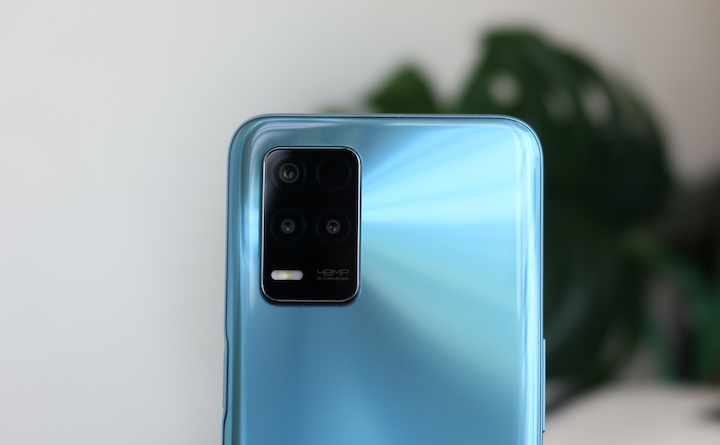
When using the standard mode, we often get clear and sharp photos that tend to oversaturate on the greens and reds even when the AI enhancement is turned off. It’s not that bad, but it does look obviously boosted. We found the 48MP mode doing a better job in producing more natural-looking greens. Speaking of which, having a 48MP lens is extra handy if for some reason you plan to use it for large photos like for posters, or if you want to retain more details instead of using the standard 5x or 10x zoom on this realme 8 5G.
With a dedicated macro lens, taking photos with the ultra macro mode gives us a nice close-up bokeh effect that can be a hit or miss in the process. Just make sure to focus the shot well, and you’ll get a good one.

Meanwhile, the portrait mode is surprisingly on point most of the time with excellent subject-background separation even in this case when we used a transparent cup.
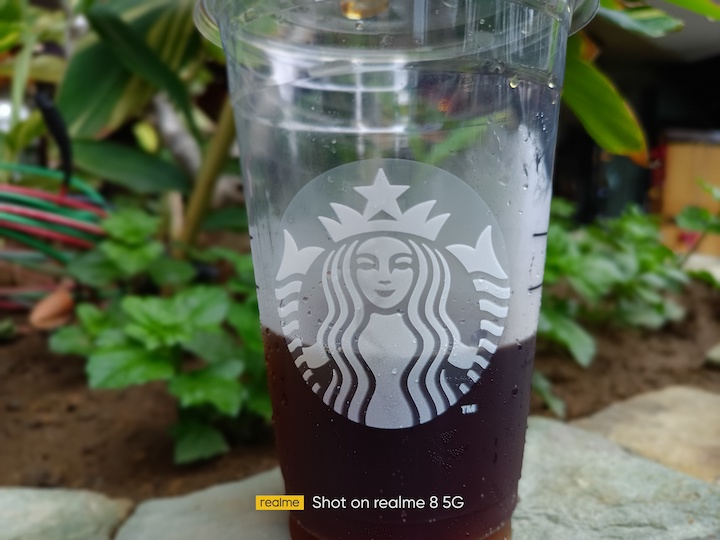
As for night photography, we don’t really get a huge improvement with its night mode, but it did get a little brighter and sharper.

For selfies, the front camera works best under natural lighting, falling more on cooler tones. But for lowlight environments, it often struggles, especially on the skin tone. We suggest taking multiple shots to get a decent one.
For videos, it’s capable of shooting up to 1080p at 30fps with an ultra steady mode option which is great to have in its range.
Software-wise, the realme 8 5G runs Android 11, skinned with realmeUI 2.0. If you’re a previous OPPO or realme user, this interface should be familiar and easy to go around with. It comes with a few bloatware and pre-installed apps such as Facebook, Netflix, Lazada, WPS, and Twitter that you can uninstall if you don’t plan on using.

By default, the app drawer for the home screen is turned on, but you can change it in the settings to the standard mode or simple mode. And similar to most phones today, you get the option to navigate with gestures or the traditional on-screen buttons.

If you want to personalize the interface further, then you can tweak the personalizations category in the settings. And this will allow you to customize the overall theme, wallpapers, icon style, app layout, font, colors, and notification drawer. As for other features, there’s dark mode, digital wellbeing and parental controls, smart driving, riding mode, and mini window or floating window for compatible apps.

The realme 8 5G comes with 128GB of storage space that’s expandable via the microSD card for up to 1TB. Out of that 128GB, we get a usable 110GB out of the box.
Under the hood, the realme 8 5G is equipped with a MediaTek Dimensity 700 chip together with a Mali-G57 GPU, and a generous 8GB of RAM. The Mediatek Dimensity 700 is common today within affordable 5G ready devices, and it’s deliverable enough for day-to-day casual use as well as some light gaming.

Then again, we are aware that realme can do better as they were able to use the Mediatek Dimensity 800U for the realme 7 5G. They probably chose the Dimensity 700 to make it more budget-friendly, and they have accomplished that. But in doing so, this makes it an ideal everyday device if you’re not a heavy user. If you’re going to use it for calls, messaging, social media scrolling, video streaming, and the like, it should do well as long as you keep the device optimized.
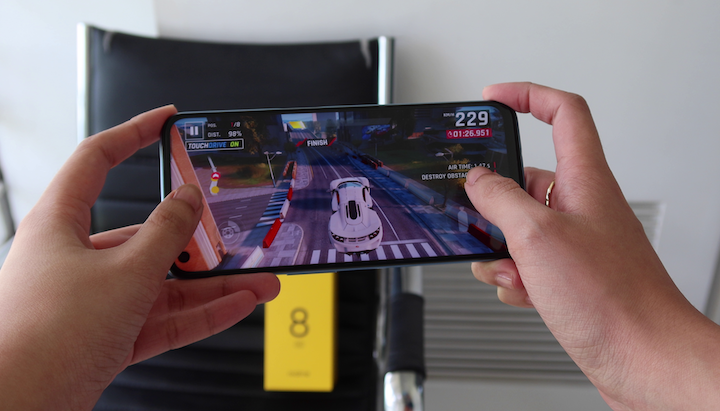
Playing heavy games on the other hand can be a slightly laggy experience so we suggest playing under the lowest graphic settings available and take advantage of the Game Space app.
For some numbers, take a look at the benchmark scores we got:
For security, you can unlock the phone via the side-mounted fingerprint scanner and face unlock. Both are generally reliable and quick but aren’t as snappy as higher smartphones, which you wouldn’t really notice on day-to-day use. The face-unlock can have some mishaps under low light conditions.
The realme 8 5G is equipped with WiFi, Bluetooth 5.1, NFC, 5G, 4G LTE, GPS, and dual-channel acceleration that allows you to download apps faster by using WiFi and mobile data simultaneously.
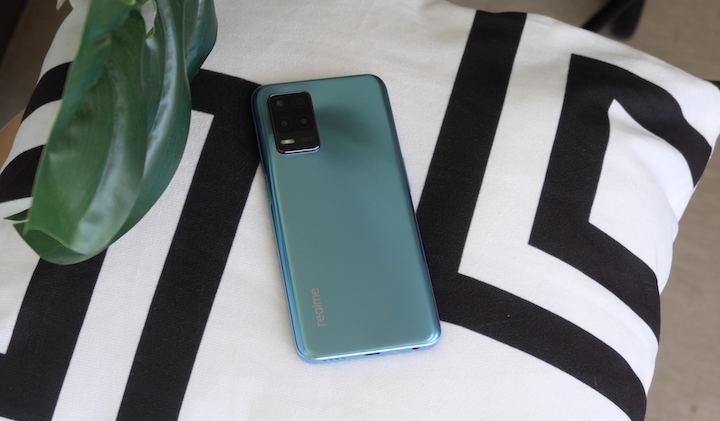
Keeping this phone running is a large 5000mAh battery with support for 18W fast charging. In our experience, the battery can easily last you a day or two if you’re a moderate user and if you won’t use it much for gaming.

In the PCMark’s Work 3.0 Battery Test, we yielded a very good score of 20 hours and 31 minutes. As for our standard video loop test, the realme 8 5G got an impressive total of 27 hours and 6 minutes of playback.
Charging on the other hand takes about 2 hours and 30 minutes from 0 to 100% which isn’t that fast compared to the realme 7 5G or the realme 8’s 30W charging support. Clearly charging speed is one of the compromises they made for its affordable price.
Locally the realme 8 5G has an SRP of PHP 11,990USD 204INR 17,321EUR 195CNY 1,488, making it a worthy contender in the affordable 5G smartphone market. It is slightly better than the 5G-ready POCO M3 Pro and Redmi Note 10, but if 5G connectivity isn’t much of a priority for you, there are better options available in its price range.
Nonetheless, if 5G connectivity is something you really want to experience, which by the way will still depend on if it’s available in your area, then the realme 8 5G is a recommendable smartphone for you.
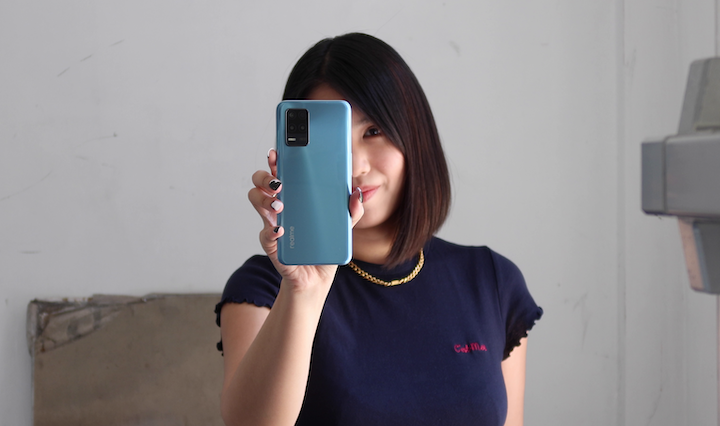
And that wraps up this review. We’d love to hear your thoughts about the realme 8 5G in the comments.
realme 8 5G specs:
6.5-inch FHD+ (1080 x 2400) IPS LCD, 405 PPI
90Hz refresh rate
MediaTek Dimensity 700 5G 2.2GHz octa-core CPU
ARM Mali-G57 MC2 GPU
8GB LPDDR4x RAM
128GB UFS 2.1 storage
expandable up to 1TB via microSD
Triple rear cameras:
• 48MP F1.8 (main)
• 2MP F2.4 (macro)
• 2MP F2.4 (depth)
16MP F2.1 front camera
5G, 4G LTE
Dual-SIM (nano)
WiFi 802.11 a/b/g/n/ac
Bluetooth 5.1
GPS, A-GPS, BEIDOU, GALILEO, QZSS, GLONASS
NFC
Fingerprint scanner
3.5mm audio jack
realme UI 2.0 (based on Android 11)
USB Type-C
5,000mAh battery w/ 18W fast charge
162.5 x 74.8 x 8.5mm
185g
Supersonic Blue, Supersonic Black

YugaTech.com is the largest and longest-running technology site in the Philippines. Originally established in October 2002, the site was transformed into a full-fledged technology platform in 2005.
How to transfer, withdraw money from PayPal to GCash
Prices of Starlink satellite in the Philippines
Install Google GBox to Huawei smartphones
Pag-IBIG MP2 online application
How to check PhilHealth contributions online
How to find your SIM card serial number
Globe, PLDT, Converge, Sky: Unli fiber internet plans compared
10 biggest games in the Google Play Store
LTO periodic medical exam for 10-year licenses
Netflix codes to unlock hidden TV shows, movies
Apple, Asus, Cherry Mobile, Huawei, LG, Nokia, Oppo, Samsung, Sony, Vivo, Xiaomi, Lenovo, Infinix Mobile, Pocophone, Honor, iPhone, OnePlus, Tecno, Realme, HTC, Gionee, Kata, IQ00, Redmi, Razer, CloudFone, Motorola, Panasonic, TCL, Wiko
Best Android smartphones between PHP 20,000 - 25,000
Smartphones under PHP 10,000 in the Philippines
Smartphones under PHP 12K Philippines
Best smartphones for kids under PHP 7,000
Smartphones under PHP 15,000 in the Philippines
Best Android smartphones between PHP 15,000 - 20,000
Smartphones under PHP 20,000 in the Philippines
Most affordable 5G phones in the Philippines under PHP 20K
5G smartphones in the Philippines under PHP 16K
Smartphone pricelist Philippines 2024
Smartphone pricelist Philippines 2023
Smartphone pricelist Philippines 2022
Smartphone pricelist Philippines 2021
Smartphone pricelist Philippines 2020
Mimi says:
I hope someone could answer regarding if the Realme 8 5G does have NFC? Some reviews say it doesnt but others tell otherwise. Thanks